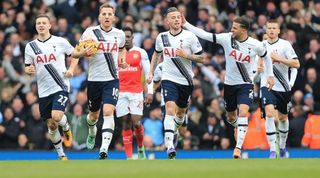There’s so much more to Erik Lamela than meets the eye – and you won’t see it in YouTube compilations
The Argentine has proved himself one of Tottenham’s most improved players over the last season, writes Seb Stafford-Bloor – made all the more impressive by an often-testing history…
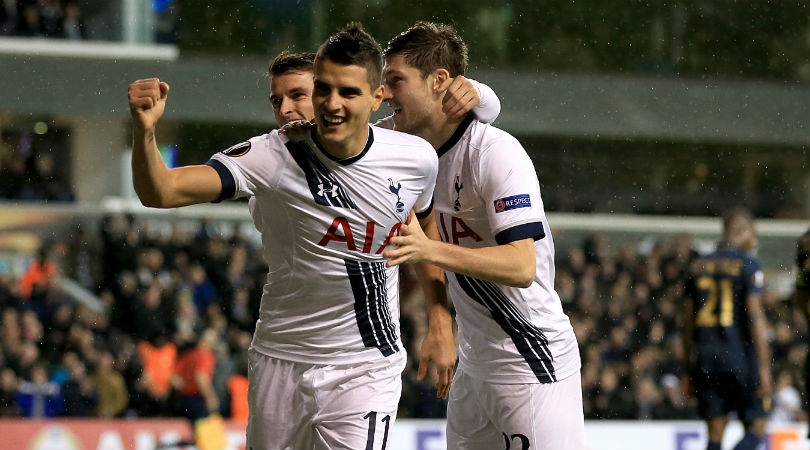
It's late June 2011 and El Monumental has descended into chaos. Following a 3-1 loss to Belgrano over over two legs, River Plate have been relegated for the first time in their 110-year history. The stadium is a physical representation of trauma: police fire water cannons at mutinous supporters, hooded youths are throwing unidentifiable objects towards the pitch and, encircled within a ring of stewards, River's first team sob uncontrollably.
Within that ugly spectacle, crouched over and in tears, was a teenage Erik Lamela. Having reached the end of his first full season with his boyhood club, it would be the last time he wore the team's iconic No.10 shirt.

Two months later, he had moved to Rome to begin life in Serie A. By August 2013, Lamela had hot-footed again and begun what would ultimately be a trying 18 months at Tottenham. The Argentine was willowy and wasteful, frail and fragile, clearly blessed with the technical ability to command a £30m transfer fee but with not nearly enough Premier League suitability to justify it.
Edited personality
In 2016, every player in the world seems to have his own YouTube compilation. Airbrushed and edited, they are banal videos which make everyone look like a star
Lamela’s story between then and now has been frequently recited. Injured under Andre Villas-Boas, distrusted by Tim Sherwood and eventually restored by Mauricio Pochettino, Lamela is a different beast these days. The old flecks of imperfection remain and traces of his flair heritage can still be spotted, but now iron-willed and nasty, the Argentine has become a teflon cog within Pochettino's relentless mechanism.
Lamela has been spoken about for a long time. A gem of River Plate's youth academy who attracted serious interest from Barcelona as a teenager, he has been assumed destined for the top of the game as long as his name has been known. What nobody realised then, however, was that it would be his personality rather than his flashy frills which would give him traction at the top of the sport.
In 2016, every player in the world seems to have his own YouTube compilation. Airbrushed and edited – and inevitably soundtracked to some EuroTrance nightmare – they are banal videos which make everyone look like a star.
Get FourFourTwo Newsletter
The best features, fun and footballing quizzes, straight to your inbox every week.

(OK we know, but this really was great.)
So, when Lamela was signed by Tottenham and their supporters clamoured for a look at their new record signing's back catalogue, they saw a flashy winger with a millennial's haircut and big bag of tricks. That may not have been an entirely inaccurate depiction of Lamela, but what those videos were never able to show was his texture.
The qualities which have allowed him to rediscover his equilibrium at White Hart Lane are those which are exposed in tiny snippets, like in this extract from a Guardian interview in November 2014.
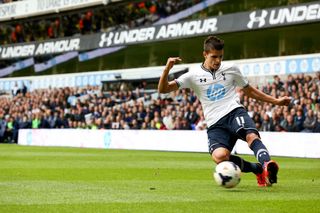
“There was talk, not only in the summer, but in December – people had spoken about me in Italy and stuff,” Lamela recalled. “But I’d spoken with my family and my girlfriend and we were all convinced that my time would come, that once I got over this injury I would be able to show what I could do. We were never going to leave this challenge.”
True grit
When Marseille were rumoured to be close to signing him on loan in August 2015, his imminent departure seemed merciful
Lamela, you see, is not an ordinary footballer. The 24-year-old is betrayed by both his appearance and his technical proficiency: he is neither a flouncing, flakey show-boater, nor someone overly-enamoured with his own ability. His failures appear to make him stronger and his appetite for self-improvement is, in this age of entitlement and exaggerated self-worth, quite remarkable.
Dive through social media for long enough, for instance, and you'll find the videos showing him on the pitch in deserted stadiums after games, dancing with footballs under the dimming floodlights and honing his technique. They're sequences which belong in stylised Hollywood montages, but are rarely seen in the three-dimensional world.
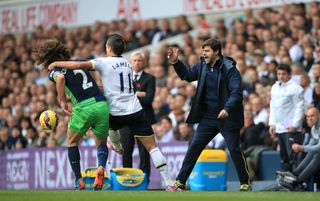
But to appreciate Lamela’s reclamation project, it's important to appreciate the atmosphere within which it has occurred.
For a long time, he was unpopular at White Hart Lane. His errant touches would draw audible frustration from the stands and, actually, there were times when the relationship between the player and the supporters became distinctly uncomfortable – almost mutinous. When Marseille were rumoured to be close to signing him on loan in August 2015, his imminent departure seemed merciful. He had, by anybody's reckoning, suffered enough.
There’s a world outside
English football culture is very insular and we consider our own Premier League, quite wrongly, to be an ultimate proving ground
But then, that was to underestimate him and also, maybe, why that traumatic afternoon at El Monumental remains pertinent. English football culture is very insular and we consider our own Premier League, quite wrongly, to be an ultimate proving ground in which pressure and expectation collide at a terrifying apex.
But think of what Lamela endured and was exposed to – or, more specifically, consider the hardening effect of feeling such fierce footballing acrimony as a teenager? In sport, as they are in life, vivid experiences tend not only to linger in a person's consciousness, but also to shape their personality and guide their future.
Facing the same discontent, many other players would have left Tottenham at the earliest opportunity. Rather than pushing through the fire, they would have abandoned the challenge in England and re-glorified themselves in a more forgiving league. Lamela didn't and that, perhaps, is something too commonly overlooked.
While Pochettino and his coaching staff have had a profound influence on the player's trajectory, none of their instruction, direction or faith would have been worth anything had he himself not been receptive to it.
Change is good
His improvement has been enabled by not only an unusual tolerance for adversity, but also a willingness to be broken down and rebuilt
And there has had to be a lot of change. In August 2013, after Lamela's move to England had been completed, journalist Paolo Bandini wrote: "Lamela still has room for improvement… most notably in the defensive side of the game. He was lax at times in tracking back for Roma, and it will be up to Villas-Boas whether to demand more from him in that department or simply position him in such a way that his responsibilities are reduced.”
When a perception like that exists, it's rarely corrected. Most players who fall into that category spend their entire careers being accommodated and are generally tolerated for who they are.
The counter-example that Lamela provides is rare. His improvement has been enabled by not only an unusual tolerance for adversity, but also a willingness to be broken down and rebuilt.
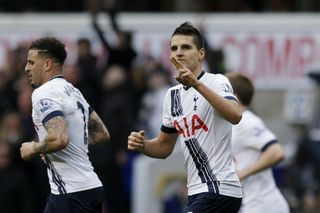
That malleability may be typical in more mundane players who regularly have to contort their shape for the sake of just having a career, but it's scarce in someone who was an Argentina international before his 20th birthday.
That kind of player floats to the top of the game, expects to be indulged and rarely takes on the mid-career challenge of altering his habits and traits. When asked to get fitter and work harder, that kind of player usually cannot call his agent quickly enough.
You’re so very special
Maybe that fractious 2011 day in Buenos Aires meant nothing, maybe everything
It takes a special manager, then, to oversee such a change – but also a special person to be understand its necessity.
So Lamela is special. Maybe not in the dazzling Gareth Bale way that was anticipated but, through his range of career experiences and his personality blend, he has become something precious at White Hart Lane. He is the locking mechanism at the top of the formation, an attacking flourish when needed and also one of the hardest working flair players the Premier League has ever seen.
Maybe that fractious 2011 day in Buenos Aires meant nothing, maybe everything. Regardless, Lamela has allowed himself to be a symbol of the changing times at Tottenham: he is both his manager's and his own finest achievement.
Seb Stafford-Bloor is a football writer at Tifo Football and member of the Football Writers' Association. He was formerly a regularly columnist for the FourFourTwo website, covering all aspects of the game, including tactical analysis, reaction pieces, longer-term trends and critiquing the increasingly shady business of football's financial side and authorities' decision-making.
